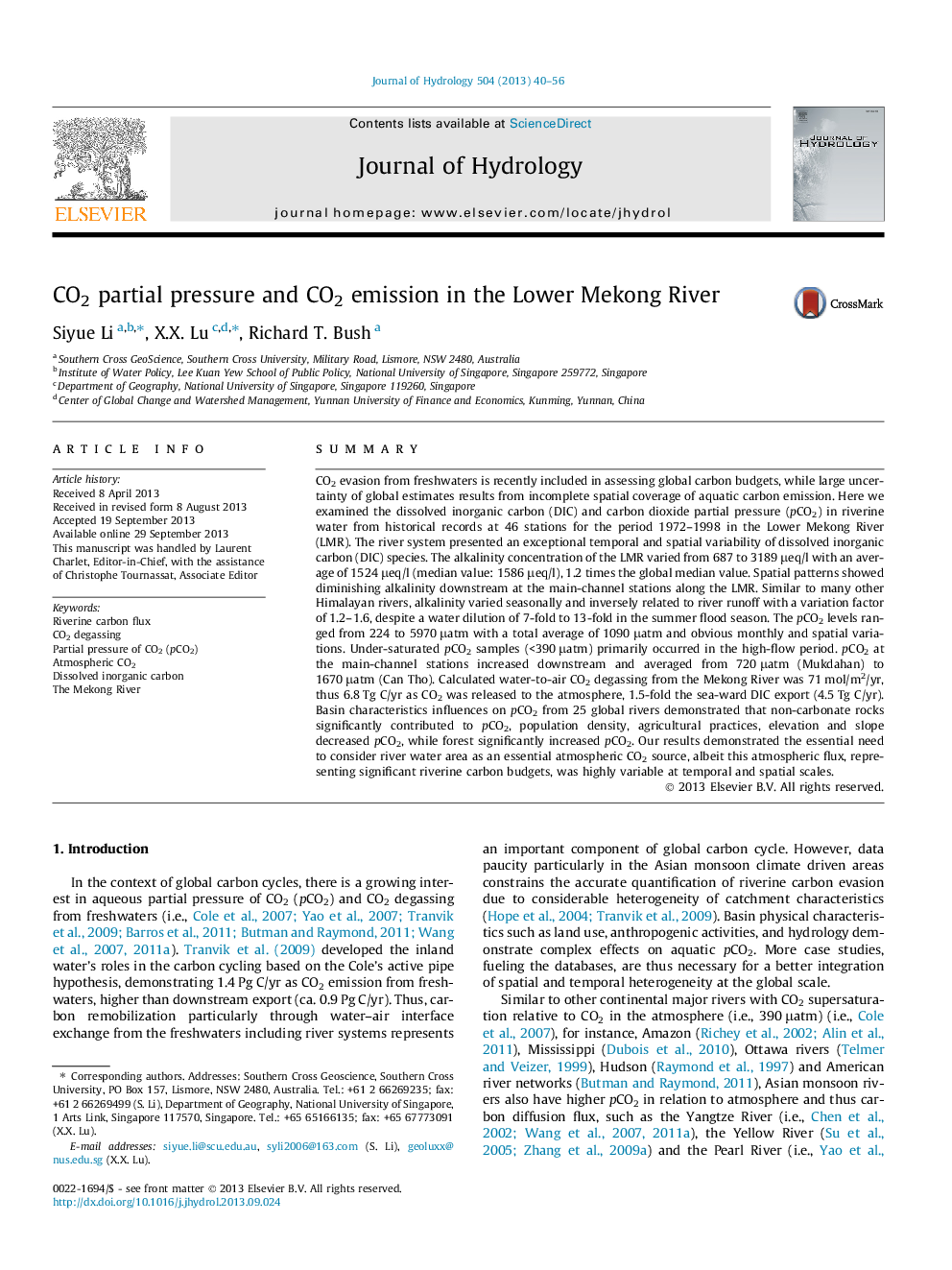| Article ID | Journal | Published Year | Pages | File Type |
|---|---|---|---|---|
| 4576073 | Journal of Hydrology | 2013 | 17 Pages |
•First comparison of DIC export and carbon emission from the Mekong River.•pCO2 consistent with global rates, ranging 224–5970 μatm and averaging 1090 μatm.•Mekong River water-to-air CO2 flux is substantial at an average rate of 71 mol/m2/yr.•Mekong annual emission of 6.8 Tg C as CO2 exceeds DIC export by a factor of 1.5.•Data from 25 global rivers used to resolve basin characteristics influences on pCO2.
SummaryCO2 evasion from freshwaters is recently included in assessing global carbon budgets, while large uncertainty of global estimates results from incomplete spatial coverage of aquatic carbon emission. Here we examined the dissolved inorganic carbon (DIC) and carbon dioxide partial pressure (pCO2) in riverine water from historical records at 46 stations for the period 1972–1998 in the Lower Mekong River (LMR). The river system presented an exceptional temporal and spatial variability of dissolved inorganic carbon (DIC) species. The alkalinity concentration of the LMR varied from 687 to 3189 μeq/l with an average of 1524 μeq/l (median value: 1586 μeq/l), 1.2 times the global median value. Spatial patterns showed diminishing alkalinity downstream at the main-channel stations along the LMR. Similar to many other Himalayan rivers, alkalinity varied seasonally and inversely related to river runoff with a variation factor of 1.2–1.6, despite a water dilution of 7-fold to 13-fold in the summer flood season. The pCO2 levels ranged from 224 to 5970 μatm with a total average of 1090 μatm and obvious monthly and spatial variations. Under-saturated pCO2 samples (<390 μatm) primarily occurred in the high-flow period. pCO2 at the main-channel stations increased downstream and averaged from 720 μatm (Mukdahan) to 1670 μatm (Can Tho). Calculated water-to-air CO2 degassing from the Mekong River was 71 mol/m2/yr, thus 6.8 Tg C/yr as CO2 was released to the atmosphere, 1.5-fold the sea-ward DIC export (4.5 Tg C/yr). Basin characteristics influences on pCO2 from 25 global rivers demonstrated that non-carbonate rocks significantly contributed to pCO2, population density, agricultural practices, elevation and slope decreased pCO2, while forest significantly increased pCO2. Our results demonstrated the essential need to consider river water area as an essential atmospheric CO2 source, albeit this atmospheric flux, representing significant riverine carbon budgets, was highly variable at temporal and spatial scales.
Graphical abstractFigure optionsDownload full-size imageDownload as PowerPoint slide
